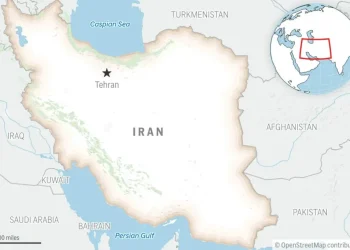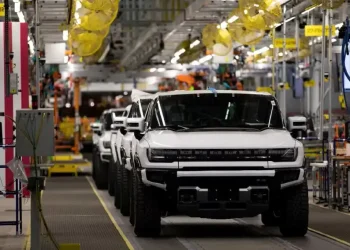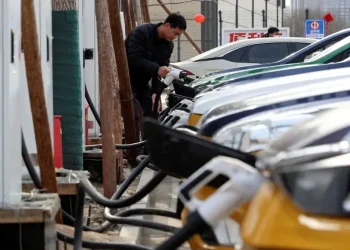U.S. Tariffs on European Goods Threaten Major Disruption to $2 Trillion Transatlantic Trade
As the world’s largest trading partners edge toward a tariff showdown, businesses and consumers brace for economic fallout on both sides of the Atlantic.
Deadline Looms as Trump Considers Steep Tariff Hike on European Imports
FRANKFURT, Germany — The Biden administration is poised to decide whether to allow steep tariffs on European goods to take effect Monday, a move that could disrupt the world’s largest trading relationship and spark significant retaliatory action from the European Union.
The tariffs, originally announced by former President Donald Trump during his earlier term, include a 20% import tax on all EU-made products. Though temporarily reduced to 10% and delayed to allow for negotiations, the White House is now reportedly considering raising the rate to as high as 50% in response to what it sees as continued unfair trade practices by the EU.
If implemented, the tariffs would make a wide range of European exports — from French cheese and Italian leather to German electronics and Spanish pharmaceuticals — significantly more expensive in the United States.
EU Warns of Retaliation if No Deal Is Reached
The European Commission, which oversees trade policy for the EU’s 27 member nations, has said it remains hopeful for a last-minute agreement. But if talks fail, Brussels is ready to strike back with tariffs of its own — targeting key American exports like beef, beer, auto parts, and even Boeing aircraft.
“The EU cannot and will not allow itself to be strong-armed on core trade principles,” a Commission spokesperson said. “We are prepared to defend our economic interests.”
The Stakes: A $2 Trillion Trade Relationship
Trade between the U.S. and the European Union accounts for roughly $2 trillion annually, making it the most robust commercial relationship in the world.
According to Eurostat, goods and services flow between the two at an average rate of €4.6 billion per day. Major U.S. exports to the EU include crude oil, pharmaceuticals, aircraft, and automobiles. In return, European countries ship cars, wine, chemicals, medical devices, and luxury goods across the Atlantic.
However, the EU enjoys a significant trade surplus in goods — approximately €198 billion ($232 billion) — a sticking point that Trump has long criticized.
That imbalance shrinks considerably when services are factored in. American firms dominate in tech, finance, legal services, and travel, cutting the overall trade deficit to about €50 billion ($59 billion), or less than 3% of total trade.
Points of Contention: Agriculture, Autos, and VAT
The breakdown in trade negotiations centers on several hot-button issues:
- Agricultural policies: The EU bans U.S. imports of chlorine-washed chicken and hormone-treated beef, citing health concerns. U.S. negotiators argue these rules are non-scientific barriers to trade.
- Tariffs on industrial goods: Trump-era policies imposed a 50% tariff on EU steel and aluminum and floated a 25% tax on autos and parts.
- European VAT: Trump has slammed Europe’s value-added tax system, claiming it disadvantages U.S. exporters. Economists largely disagree, pointing out that VAT applies equally to domestic and foreign products and isn’t typically considered protectionist.
- Regulatory standards: The U.S. has also pushed for sweeping changes to EU consumer and product safety regulations, which Brussels considers non-negotiable due to the political complexity of altering bloc-wide laws.
Companies Sound the Alarm: Costs Will Hit Consumers
Global companies with a footprint in both markets are already adjusting strategies.
Mercedes-Benz, which manufactures about 35% of its U.S.-sold vehicles in Alabama, said it is holding prices steady for now — but warned of “significant increases” on the horizon if tariffs rise further.
Italian spirits maker Campari Group, owner of Skyy vodka and Aperol, is weighing price hikes or discounts depending on how competitors react.
Luxury conglomerate LVMH — which owns Louis Vuitton, Christian Dior, Moët & Chandon, and Tiffany & Co. — hinted that it may move more production to the U.S. if tariffs remain high. CEO Bernard Arnault, a past Trump ally, placed the blame squarely on Brussels if negotiations collapse.
“If Europe fails to negotiate intelligently, that will be the consequence for many companies,” Arnault said.
Economic Risk: U.S. Could Take the Bigger Hit
According to a review by Brussels-based think tank Bruegel, the economic blow of a tariff war could fall harder on the United States than on Europe.
If tariffs rise to 10%–25% across the board:
- U.S. GDP could fall by 0.7%
- EU GDP may dip by 0.3%
Economists argue that while Trump’s trade strategy may offer symbolic wins, it ultimately risks pushing prices higher for U.S. consumers and slowing growth across industries dependent on international supply chains.
“The victims of this kind of protectionism,” said Holger Schmieding, chief economist at Berenberg Bank, “will mostly be American shoppers.”
A Possible Off-Ramp? A Framework Deal on the Table
Despite the brinkmanship, both sides may still walk away with a provisional agreement that keeps the most extreme measures at bay.
Trade experts suggest the most likely outcome is a framework that holds tariffs at 10% while negotiations continue. The U.S. could offer limited exemptions for specific goods, while the EU might ease certain regulatory bottlenecks without touching core standards.
Such a deal would allow both sides to claim victory without igniting a full-blown trade war.
“The road could be rocky,” Schmieding noted, “but some form of compromise is likely. Trump may spin it as a win, but in the long run, it’s consumer-friendly policies that matter — not political posturing.”
This article was rewritten by JournosNews.com based on verified reporting from trusted sources. The content has been independently reviewed, fact-checked, and edited for accuracy, neutrality, tone, and global readability in accordance with Google News and AdSense standards.
All opinions, quotes, or statements from contributors, experts, or sourced organizations do not necessarily reflect the views of JournosNews.com. JournosNews.com maintains full editorial independence from any external funders, sponsors, or organizations.
Stay informed with JournosNews.com — your trusted source for verified global reporting and in-depth analysis. Follow us on Google News, BlueSky, and X for real-time updates.














